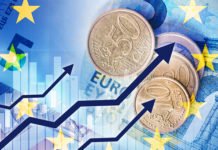Markets
US President-elect Trump announcing he will raise tariffs on imports from Canada and Mexico by 25% and the levy on China by 10% in the end only had a limited impact on markets. Early rises in yields and the dollar were largely reversed. The US yield curve closed with the 2-y 1.2 bps lower (benchmark change) and the 10-y adding 3.3 bps. However, the biggest intraday swigs came in US trading hours, not immediately after the Trump announcements. US yields initially (re)gained a few basis points on mixed regional confidence and housing data. US consumer confidence rebounded to the best level since July last year. A $70 bln 5-y auction went ok, with a slightly above average bid-to-cover ratio (2.43) and a yield print close to the WI bid (4.197%). While individual policy makers evidently still put personal accents in their assessment of policy, the global tone from the Fed minutes of the November 7 meeting was that as inflation is continuing to move to the 2.0% target but the economy remaining near maximum employment, it would likely be appropriate to move gradually toward a more neutral policy stance. Uncertainty on the level of this neutral rate makes it difficult to assess the degree of policy restriction and is an additional reason for a cautious approach. Markets still see about a 60% chance on a December Fed rate cut. German yields remained under modest downward pressure easing between 0.8 bps (2-y) and 2.3 bps (10-y). US equities for now didn’t see much of a risk from the Trump tariffs announcement. The S&P 500 set a new record close (+0.57%). The dollar showed no clear directional pattern. DXY finish slightly higher from Monday’s close at 107.01.EUR/USD after an intraday rebound finish little changed (1.0489). The yen still outperformed (USD/JPY close 153.08 from 154.2).
Asian equity indices this morning are trading mixed as regional investors ponder the potential impact of Trump’s trade policy. Later today, the US calendar is well filled with amongst others a revision to the US Q3 GDP data, durable goods orders, jobless claims, the Chicago PMI and spending and income data, including the price deflators. Both the Y/Y headline (2.3%) and core (2.8%) PCE deflators are expected slightly higher from last month. The might have some intraday impact but the debate on a December rate cut won’t be concluded today as markets are counting down to the Thanksgiving weekend. US yields are in a mild correction after recent rally. In Europe, we look out how much room there is left after recent decline in yields. Even in case of a pause, the picture for EUR/USD looks fragile, with a return to the 1.0335 correction low still very well possible. Yen outperformance still continues, also this morning.
News & Views
The Reserve Bank of New Zealand lowered its policy rate for a second consecutive meeting by 50 bps, from 4.75% to 4.25%. RBNZ governor Orr suggested that a third such move would come at February 19 meeting conditional on economic projections panning out. The RBNZ puts an average policy rate of 3.83% forward in Q2 2025 (vs 4.36% in August forecasts). The landing zone remains broadly unaltered (3.17% average in Q4 2026 vs 3.13%) implying no intention to bring policy rates below neutral levels. Annual inflation forecasts for Q4 2024, 2025 and 2026 stand at 2.1%, 2.4% and 2.1%, close to August levels (2.3%-2.3%-2%). The downturn in domestic activity had stabilized in recent months, following the pronounced and broad-based deterioration observed in August. Growth is expected to recover during 2025, but considerable spare productive capacity remains in the economy. NZD swap rates rebound up to 10 bps at the front end of the curve as some expected more dovish language or even already a 75 bps rate cut today. NZD/USD leaves the YTD lows around 0.58 behind to currently change hands around 0.5870.
The pace of annual Australian inflation was unchanged in October (2.1% Y/Y), the lowest level since July 2021. The significant drop from 3.8% Y/Y in June Is mainly due to price falls in Electricity and Automotive fuel prices. Core measures show a more diffuse picture. Annual trimmed mean inflation was 3.5%, up from 3.2% and similar to where it was in August. The CPI excluding volatile items and holiday travel was 2.4% Y/Y, down from 2.7% in September. The next quarterly inflation report, used as key RBA-input will only be published on Jan 29. AUD/USD remains stuck near the recent lows sub-0.65…













